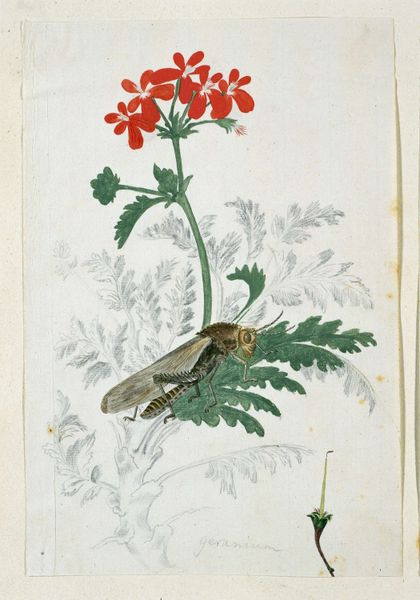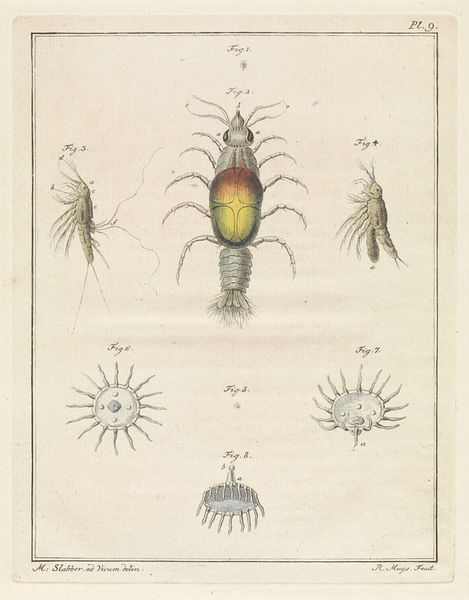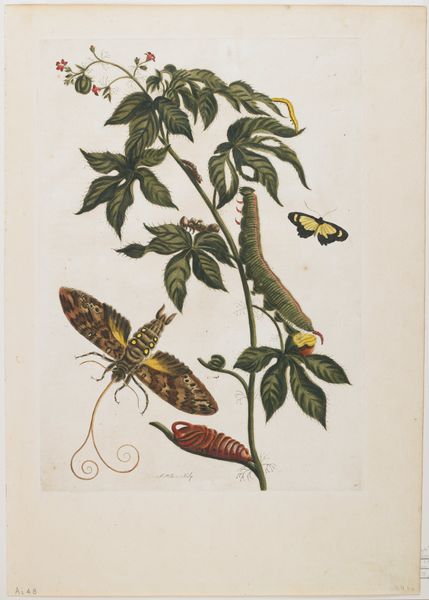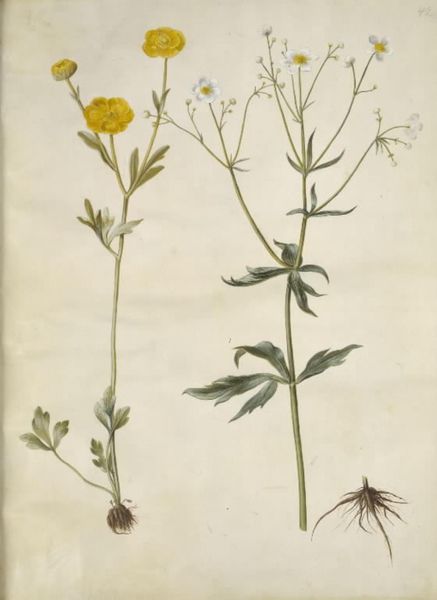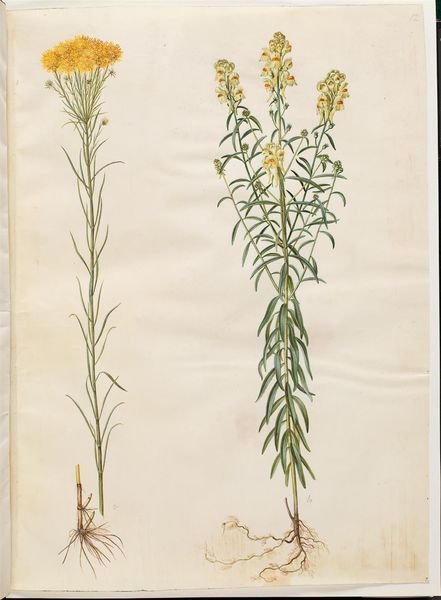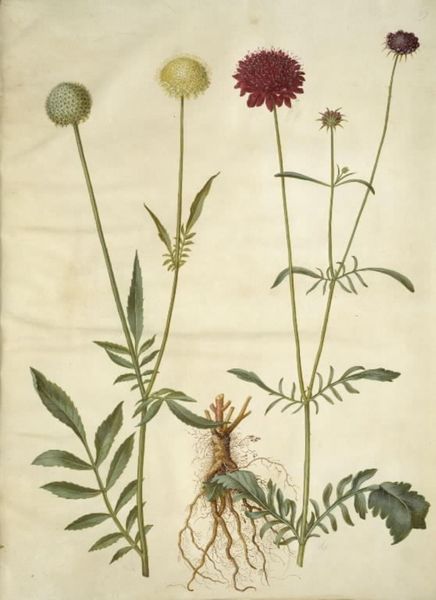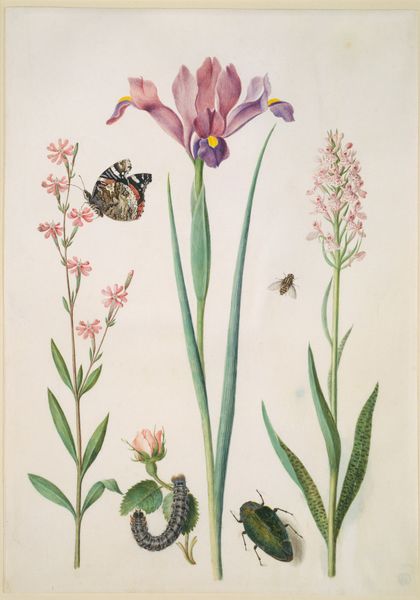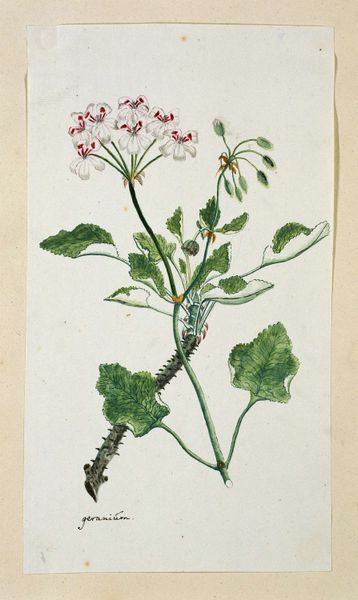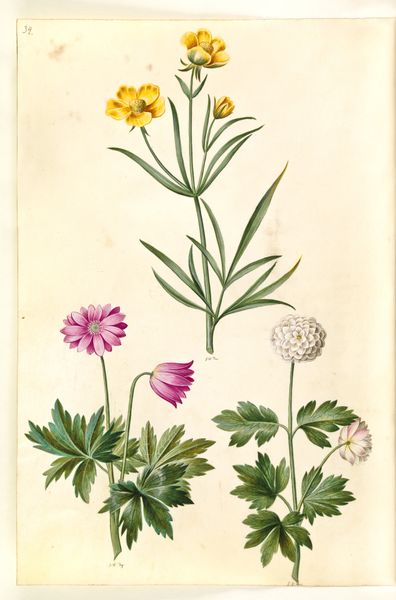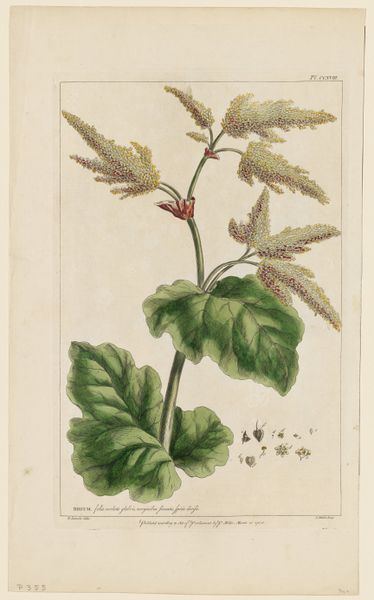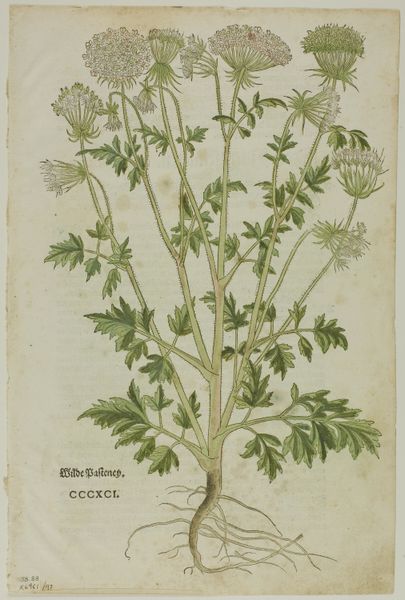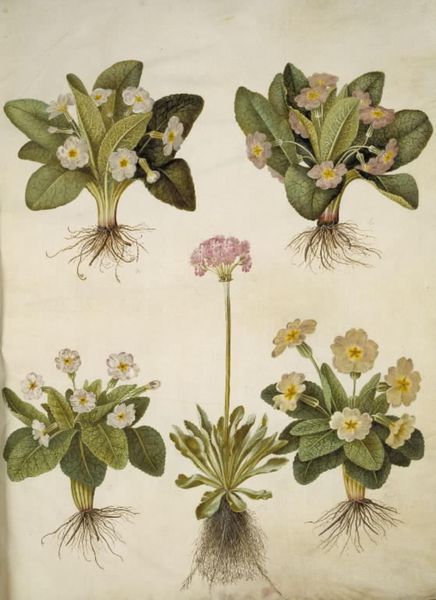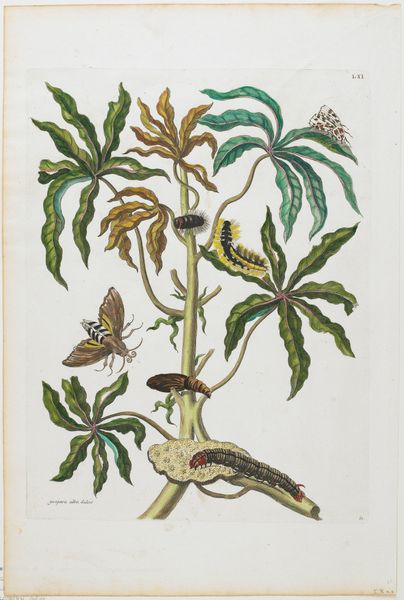
watercolor
#
water colours
#
watercolor
#
watercolour illustration
#
naturalism
Dimensions: height 660 mm, width 480 mm, height 283 mm, width 178 mm, height mm, width mm
Copyright: Rijks Museum: Open Domain
Curator: This watercolor, possibly created between 1777 and 1786, depicts a Calceolaria, also known as a Slipperwort, along with three insects. It’s attributed to Robert Jacob Gordon. Editor: Immediately, I'm struck by the intimacy of the observation, almost like a scientific study, but rendered with a gentle hand. The watercolor is translucent, delicate, even. Curator: Yes, and the choice of watercolor itself contributes to that feeling. Watercolour lends itself to capturing fleeting moments of natural history with immediacy, unlike oils. Notice how the seemingly disparate inclusion of the three insects with the flowering plant evokes, in my mind, the vulnerability and connectedness of the ecosystem captured, however unintentionally. Editor: The flatness feels almost diagrammatic. Gordon seems concerned with conveying precise information about each organism's form, but also capturing the particular visual textures—the veining of the leaves, the subtle gradations in the insects' bodies. Did he intend this as a preparatory sketch for something larger or for encyclopedic knowledge? Curator: Likely it served both scientific and aesthetic purposes. The symbolism of flowers in botanical illustration carried additional layers. Consider the Calceolaria, whose slipper-like form may allude to concepts of fortune, whimsy, or even stealth due to its hidden-pocket-like petals. What message may the artist intended? Editor: Well, the labor involved in accurately rendering this subject is evident. Think of the careful preparation of the pigments and supports required. What can these raw materials, paired with skillful execution, suggest about the colonial context where the knowledge-production economy shaped such meticulous work? Curator: These details may indicate Gordon sought to impose a type of control or understanding of nature under colonial auspices, as well as personal and economic means for amassing them, by documenting and categorizing what he encountered through close visual inspection. These symbols act as memory traces within the larger historical tapestry. Editor: It shows the merging of artistry and the colonial-era thirst for cataloging and exploiting nature. The meticulous depiction belies a complicated history. Curator: Indeed. Studying this natural artwork opens a pathway into ecological reflections beyond a simple study in naturalism, and speaks to deeper layers about humanity. Editor: Right. Appreciating it also reminds us to value how meticulous creation speaks to us on both an aesthetic level and how intertwined art can be with history's larger forces and human endeavor.
Comments
No comments
Be the first to comment and join the conversation on the ultimate creative platform.
